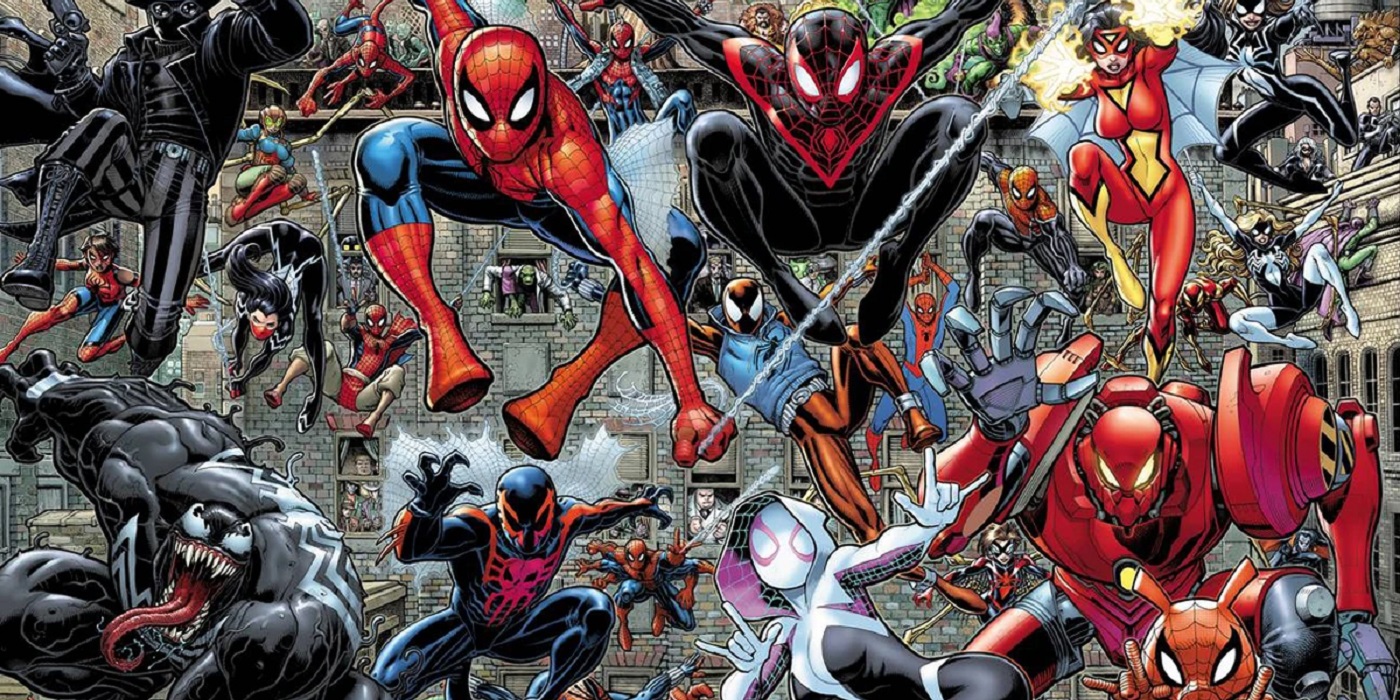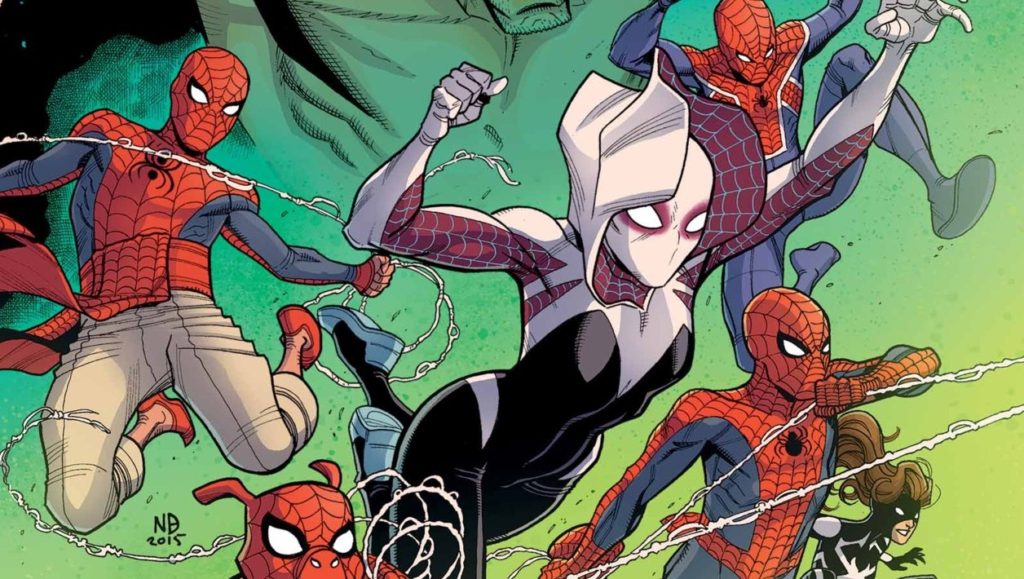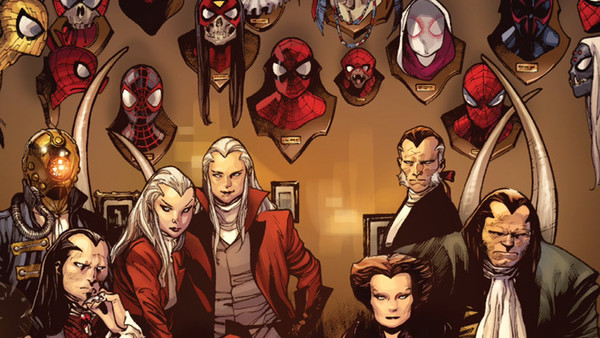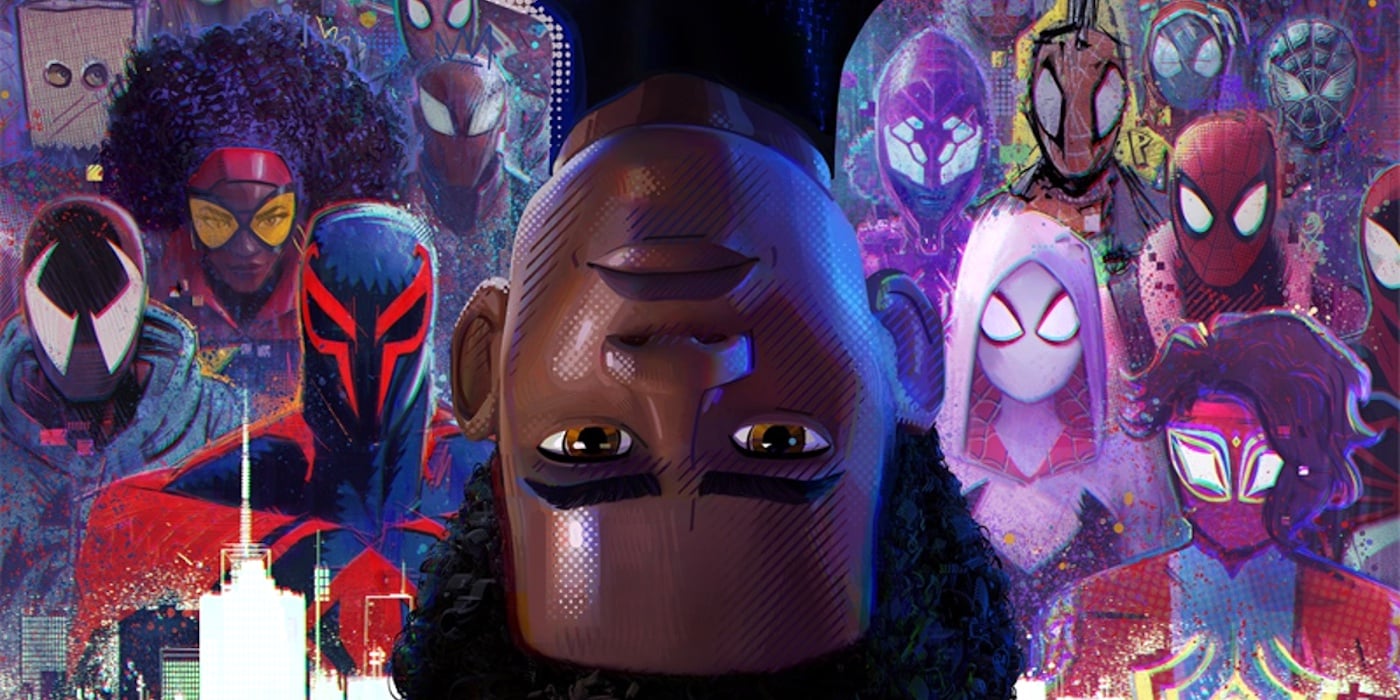Into, Across, and Beyond: A Spiderverse Breakdown

If you’ve been enjoying the Spiderverse on the big screen, you may be surprised to hear that its comic book origins involve vampires.
The latest Spiderman movie has us all jumping into the Spiderverse. And it’s fun to see that this version of the Spiderverse seems to be including just about every version of Spidey out there. From Lego to live-action, it’s a great big multiverse of spiders. But the Spiderverse we originally saw in the comics was a little different and a little weirder. So let’s take a moment to break down what the Spiderverse is, where it came from, what it originally looked like, and how it’s different now.
Comic Book Origins
The first ever Spiderman hit the comic book scene in 1962’s Amazing Fantasy #15 and was created by Stan Lee and Steve Ditko. The original- and most commonly seen- Spidey is Peter Parker who developed various spider powers after being bitten by a radioactive spider. Since ’62 we’ve seen a variety of spider variants pop up here and there. And while each has been a lot of fun in their own right, none have ever been as prevalent, popular, or influential as Peter.
The Spiderverse was introduced a while ago, and was even seen in Spider-Man: The Animated Series which ran from 1994 to 1998. Or, at least the idea of Spidey jumping through different multiverses was. But the version we know today was introduced as a multi-title event starting in autumn 2014. And to understand what the Spiderverse is and why it came to be, we need to look at the major players and concepts.
The Big Players
First up the Spider-Totems, which admittedly can be a weird, new concept to wrap our minds around. Spider-Totems are a class of supernatural and multiversal creatures who weave the various parts of the multiverse together. Various Spider-Totems can choose individuals throughout the different universes to serve as their avatars and be gifted with spider-based powers. Those individuals go on to be different versions of Spider-Man.
The next major players are Morlun and the Inheritors. Morlun is a psychic vampire who was introduced in June 2010’s The Amazing Spider-Man and the Inheritors are his family. The Inheritors feed on the various totems, and their favorite food source seems to be the Spider-Totems and by extension the Spider heroes who use their powers. They travel through the multiverse, capturing and killing Spider-Man variants to feed on.
Superior Spider-Man is a variant of Spider-Man with Spidey’s mind in Doc Ock’s body. After being pulled through a time warp to the year 2099 he accidentally figures out how to travel through the multiverse attempting to get home and finding the bodies of alternate Spider-Men. In response, Spider-Man 2099 decides to assemble an entire army of Spider-Man variants to fight the threat.
The Spiderverse on the Big Screen
Obviously, this is a lot for most movie-going fans to take in. Multiverse jumping and an endless number of Spideys are one thing. But psychic vampires killing and eating versions of some of my favorite heroes? That’s a lot to take in, and not terribly family-friendly. So when Spiderverse was animated and brought over to the big screen a few key changes were made.
In the animated version, we haven’t even heard of the Inheritors. Instead, the Spider-Heroes are dealing with universe-ending issues and inconsistencies in the Multiverse. And instead of Spider-Totems, there are canon events that must be preserved. Additionally, the team has been assembled by Miguel O’Hara‘s version of Spider-Man as opposed to Spidey-In-A-Doc-Suit Superior Spider-Man.
Have you seen Across the Spiderverse yet? Which version of the Spiderverse do you prefer? Do you think we will see more cameos and Easter Eggs referencing the aspects of the comics that didn’t make it to the big screen?
Let us know in the comments!
With multiversal power comes multiversal responsibility.





